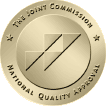Rectal Surgery Post-Surgery Guide
The following information is intended to guide you through your post-op recovery:
Diet:
- For the first few days after your return home you should eat foods that you easily tolerate normally. We generally recommend a low fat, high fiber diet to most of our patients.
Medications:
- Follow the directions on any new prescriptions that your doctor has given you. You may return to taking your regularly scheduled medications the day of your surgery, unless your doctor has directed you otherwise.
- Pain management is an important part of your post-surgery care. You should expect some discomfort after your surgery. You may be sent home with a prescription for pain medication. It is important to take your pain medicine prior to your pain becoming intense in severity.
- We encourage you to take Sitz baths as you need for comfort measures. Sitz baths are accomplished by having you sit in a tub/basin of warm water that has a water level of 3 inches or more.
- PLEASE NOTE: No pain medication refills will be authorized on the weekends. If a refill is needed, the request must be made before 12:00 on Friday.
- Some side effects from the pain medications include nausea and constipation. If you experience nausea or vomiting related to your pain medications, you should stop the medication and take ibuprofen or acetaminophen for pain management.
Bowel Care:
- To prevent constipation you should drink plenty of fluids and take a stool softener daily.
- If you have not had a bowel movement within 48 hours after your return home, you should increase your fluid intake. You may take one single dose of Milk of Magnesia, as long as you have no abdominal distention.
- General Bowel Care: We recommend that you take a bulk-type laxative, like Metamucil or Citrucel, every day for 2-4 weeks after your surgery. You should drink at least four 8 ounce glasses of fluids per day and eat a high fiber diet, also.
Incision Care:
- Please leave your dressings on for 48 hours after your surgery. Unless your doctor specified otherwise you may then remove your dressing and shower. Remove the outer dressing and leave the strips of tape that cover your incision.
- You may remove the gauze dressing over your incision 48 hours after your surgery. Please leave the skin tapes in place for approximately 7-10 days.
- If your clothes irritate the incision or if you have some drainage you may leave a dry gauze dressing over your incision.
- You must observe your incision daily for signs or symptoms of infection. These signs would include: increased swelling, redness or smelly wound drainage. It is normal to have some swelling and bruising around your incision.
- It is normal to have a firm lump directly beneath your incision line. This will disappear within a couple of months.
- If you have staples or stitches, they will usually be removed 2 weeks after your surgery. You will need to make an appointment to come to the office for that.
- After the staples are removed you will have skin tapes / steri-strips across the incision. Those strips should remain in place for 5 to 10 days. The strips will gradually loosen and come off. If they do not come off within two weeks you may remove them yourself.
Physical Activity/ Restrictions:
- Upon your return home you should begin a daily walking program that will gradually increase. You should start walking inside your home initially and then gradually increase to walking around your neighborhood. Every patient will have to individualize their walking according to their general status.
- You may resume sexual activity when it is comfortable.
Bathing and Showering:
- You may start showering 48 hours after your surgery. You may shower with your steri-strips and staples or stitches in place. Do not scrub across your steri-strips or staples. Do not bathe in a tub for 10-14 days after your surgery. This includes a “hot tub”.
Driving:
- You may drive when you no longer are taking narcotic pain medications and you feel you can quickly respond to situations that will not place others in jeopardy.
Return to Work:
- The following will give you a guide for when you might be able to return to work or school:
Usually you can return to work sometime in the first week, depending on your comfort level.
Follow-up Appointments:
- You will need to return to the office for a follow-up visit usually within 2-4 weeks after your surgery. Please make sure you have your appointment scheduled.
Problems to Observe For:
Call the office for the following:
- Fever >101.0
- Uncontrolled pain. That is on a scale of 1-10 (10 being the worst pain imaginable) your pain is a level 7 or above.
- Nausea and / or vomiting that continue for 12-24 hours.
- Diarrhea that continues for 12-24 hours.
- Signs of a wound infection.
- Chest pain or difficulty breathing.
- Your incision separates or opens up.
If you have further questions after reading this handout, the office is open from 9:00AM to 5:00PM Monday through Friday. For emergencies after office hours, the answering service will be available when you call the office number.




